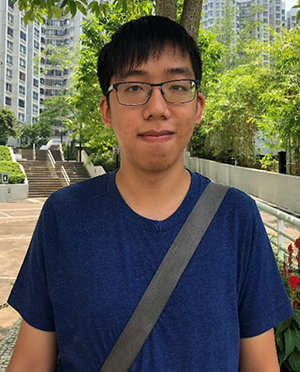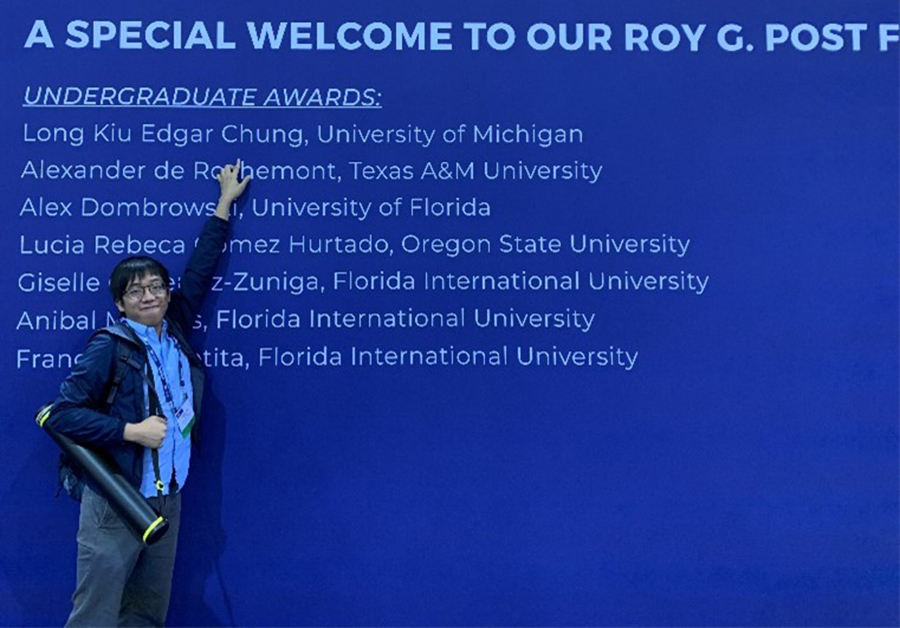News Archive
Written by Long Kiu Chung, Stanford University
Edited by Jordan Noey, MSE, University of Michigan, HPS Student Support Committee

Edgar Chung
Submitted photo
The Student Support Committee is proud to highlight the accomplishments of another remarkable student, Long Kiu (Edgar) Chung, who is working to complete his MS in mechanical engineering with focus in health physics-based research at Stanford University. We hope you take the time to learn about Edgar and see all that he has accomplished!
Edgar received his bachelor's degree in mechanical engineering from the University of Michigan in 2020. During his undergraduate education, he worked in the Radiological Health Engineering (RHE) Laboratory under Professor Kimberlee Jane Kearfott and Professor Yongjun Ye as a research assistant for three years, having supervised and contributed to many undergraduate health physics research projects with his unique background in mechanical engineering. For example, Edgar designed ergonomic, mass-producible casings for a low-cost, do-it-yourself Geiger-Mueller (DIYGM) counter designed for outreach purposes. He also investigated the kinematic behavior of radon and thoron with computational fluid dynamics simulations, as well as physical experiments with active and passive radon monitors using the school's basement as a radon chamber. Before he graduated, he also developed travelling algorithms for unmanned aerial vehicles (UAVs) to navigate and seek out lost radioactive sources in an open field.

Edgar Chung at Waste Symposium in Arizona
Submitted photo
Deciding to further pursue the topic, Edgar enrolled in a master of science degree program at Stanford University, joining Professor Grace Gao's Navigation and Autonomous Vehicles (NAV) Laboratory and subsequently Professor Marco Pavone's Autonomous Systems Laboratory (ASL), with his research focusing on neural network safety verification and training. In particular, he developed an exact set-based training method that can guarantee collision avoidance or forward invariance upon convergence for systems with neural network controllers and neural network dynamics. Collaborating with the RHE Laboratory, his ultimate goal is to apply these techniques to radioactive-source-localizing or radiation-mapping UAVs and conduct experiments on physical drones boarded with DIYGMs. With his coursework designed around automatic controls, he is currently investigating the possibility of using multirobot control techniques on the radiation localization and radiation mapping problem to further speed up the process with multiple UAVs.
Edgar has won numerous scholarships and fellowships with his research, including the Roy G. Post Scholarship for safe management of nuclear materials; the Consortium for Monitoring, Technology, and Verification Undergraduate Fellowship for verification of nuclear treaties; and the University of Michigan Energy Institute Research Fellowship for energy-related projects. Edgar currently expects to graduate in March 2022 and is on the lookout for opportunities on internships and PhD programs.
Edgar enjoys doing graphic design and listening to Hong Kong music in his free time. Proud of his heritage and background, he is also an active volunteer of the Save Cantonese movement at Stanford University, working hard to preserve his language and promote his culture in the United States after he and his family immigrated to the country five years ago. Recently, he passed the citizenship interview and became an official US citizen through naturalization. Congratulations Edgar!




